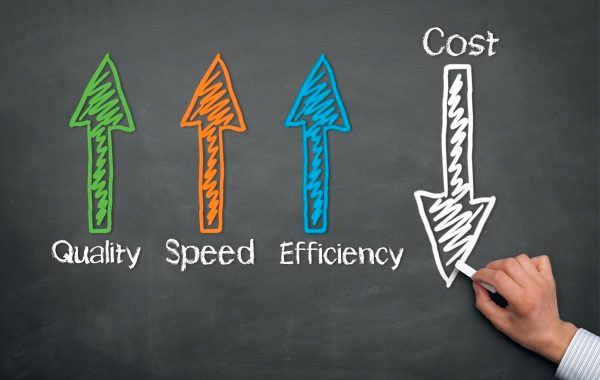Cutting costs without cutting corners is a delicate process. With recent global supply chain challenges in the electronic industry many companies needed to adapt and make drastic changes to ensure their survival. One of the main solutions was to look for ways to reduce their costs without compromising product quality or endangering jobs.
In this article, we will look at the most effective ways to reduce manufacturing costs without reducing quality.
Audit your facility and calculate operating costs
The first step your company should consider in how to reduce your manufacturing is to make sure you know what the costs are. One of the most simplest solutions to reduce expenditure is to analyse all of your companies operating costs.
Not only the current outgoings should be taken under consideration but also how different costs have changed over time.
Specific areas that you should calculate include administrative expenditure, debt management, the sum total of all overheads such as rent, maintenance, insurance, utilities, and office supplies.
With large buildings to power and expensive equipment to run, manufacturers can be faced with huge energy usage which results in high costs.
Through a few simple changes, your company may make a real difference to its energy efficiency.
You should identify your energy usage peak through the use of automate meter reading technology and develop efficiency strategies that could potentially lower your demand charges in the process.
Scheduling start-up and shut down periods where all your machinery is powered off for a length of time for example, over the weekend or at night can result in lower energy costs.
Other changes your company could consider are optimizing air compressors, creating an energy management team and maintain furnace performance.
Reduce the direct costs of materials and waste
The next step your company could take is to look at any inefficiencies in your material purchases. You may be able to reduce costs by sourcing more competitive suppliers for your materials. If it’s impossible to find an alternative cheaper supplier, there is a possibility to negotiate a long-term contract to get lower unit prices for materials from your current suppliers as they may offer bulk discounts for large orders.
Other factors that should be taken under consideration are any excess packaging used for materials. Additional packaging will increase shipping prices. Paper documentation used in orders will bring additional consumption of paper, printers and inks costs.
Material waste is another key factor to look at. The more efficient your production processes are, the less waste they will produce.
Identify weaknesses
Another way to reduce your costs is to identify any weak links within your business. You should analyse all of your internal processes and pinpoint any equipment issues and operation processes that may slow down your production.
Internal Investments
Upgrading equipment, tools and machines can help to reduce manufacturing costs and will also deliver long-term benefits to the company. However, before making large upgrades and investments it is vital to perform a careful analysis and assess the benefits.
There are many factors that can be taken under consideration while looking for ways to reduce manufacturing costs within the company without compromising product quality or endangering jobs.
Each company should carefully audit their facility and calculate their operating costs, they should then reduce waste as well as the direct costs of materials. The next step is to identify any internal weaknesses and think about potential investments that would benefit the company.
By Timmy Bubak | 07/10/21

